Yes, a spacesuit could keep you alive on the moon forever, as long as you had a supply of food, water, and oxygen. The xEMU spacesuit, developed by NASA, is equipped with state-of-the-art life support systems that would allow an astronaut to survive on the moon indefinitely. The suit includes a primary oxygen supply, a secondary oxygen supply, a system for ventilation, and a system for thermoregulation.
NASA aims to permanently settle humans on the moon with the help of its new xEMU spacesuit, which is equipped with state-of-the-art life support systems.
“That’s one small step for man, one giant leap for mankind”, were the words that Neil Armstrong uttered when he set foot on the lunar surface, becoming the first human (Buzz Aldrin was the second) to do so on July 20, 1969 as part of the Apollo 11 mission.
Since then, 12 people have walked on the lunar surface.
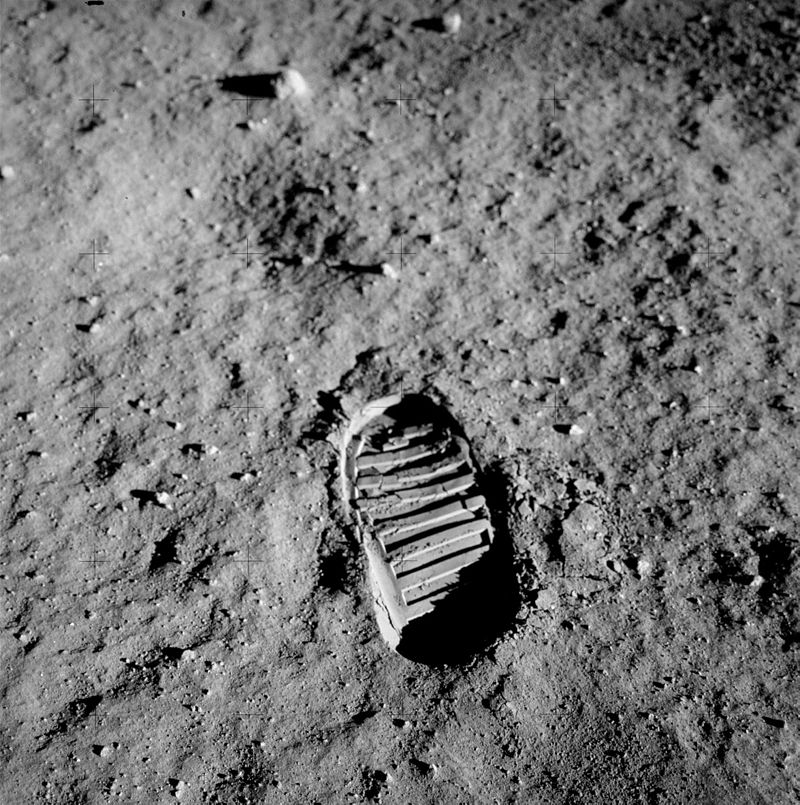
Moon missions have mostly involved orbiters and landers, without establishing any permanent human presence. However, NASA announced its ambitious Artemis program to create a permanent presence on the lunar surface for scientific investigations, as well as a rendezvous point for future Mars missions.
Having a permanent presence on the lunar surface is quite a different ballgame than just walking around on the moon for a few days and returning to Earth. This requires the development of new launching rockets, new spacesuits, and modular infrastructure to support a long-term human presence.
Let’s dive deeper into the challenges that life on the lunar surface presents.
Challenges Of Staying Alive On The Moon
The human body is like a machine adapted to function optimally on Earth. The following challenges hinder our permanent presence on the moon.
- The moon’s gravity is about 6 times weaker than the Earth’s. This results in a low gravitational force holding the molecules near the surface. As a consequence, the moon lacks an atmosphere comparable to the Earth. This results in a low atmospheric pressure (3.0 x 10-15 bar, almost a vacuum, in comparison to Earth).
- In a vacuum, the boiling points of liquids fall drastically, which means that liquids spontaneously form gases. Thus, the air in our lungs would expand and bodily fluids would expand, pushing against the organ tissues and blood vessels, causing bloating. Exposure for long durations (>90s) have been fatal (Soyuz 11 depressurization incident, 1971).
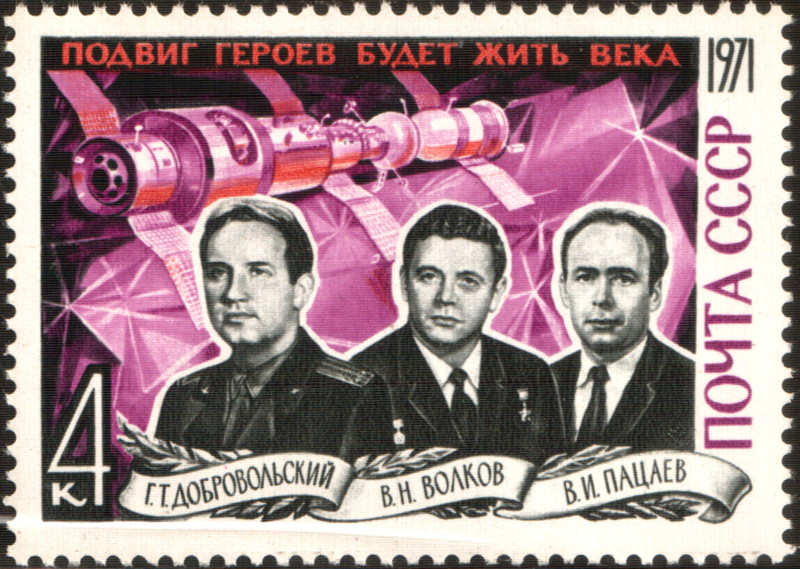
- A lack of atmosphere also translates to a lack of O2 gas. The previously existing O2 gas in the lungs would quickly diffuse out of the lungs due to a lack of atmospheric pressure. Also, a lack of O2 gas would mean that breathing doesn’t deliver more oxygen to the lungs. Organs stop receiving oxygenated blood, and the person would pass out due to their brain shutting down. Continued O2 deprivation would be fatal.
- Also, the lack of a strong magnetic field and an ozone layer means that the body would be exposed to the harmful ionizing radiation of outer space. This could lead to its own set of problems.
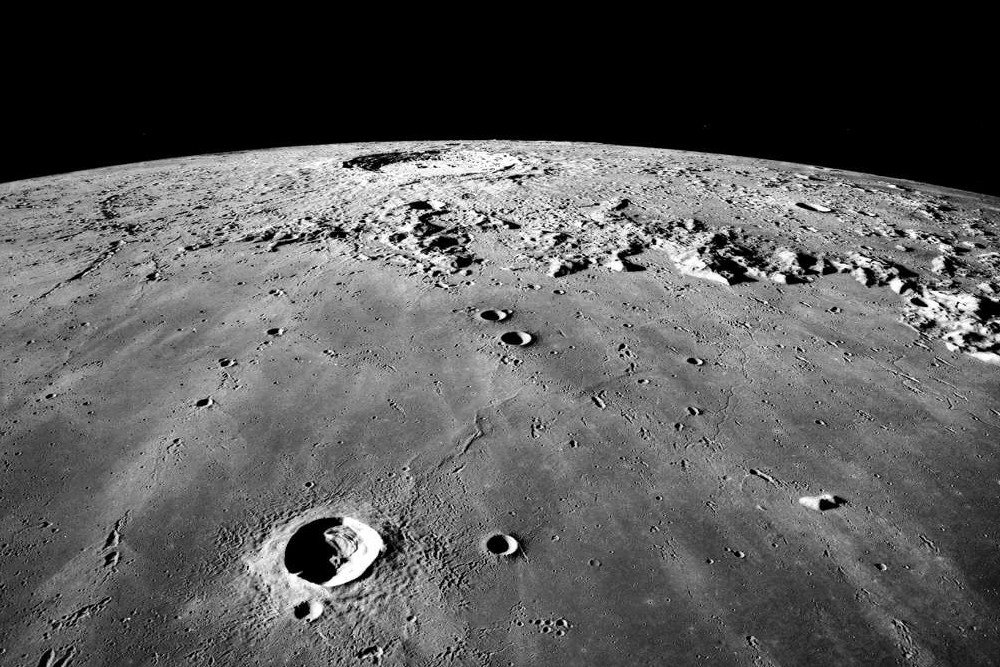
- On the Earth, the human musculoskeletal system is tuned to resist gravity. A lack of gravity would accelerate muscle atrophy (loss) and a weakened skeletal system, somewhat akin to bedridden patients.
- The lunar temperature varies drastically from 120oC (250oF) at the day side to -130oC (-208oF) on the night side.
- Millions of meteorite strikes per year, high diurnal temperature variation (difference between day and night temperature) and a lack of air have made the lunar surface an aggregation of very fine grains, akin to glass shards. These shards can damage instruments and spacesuits.
Also Read: Why Is There No Life On The Moon?
New Technology Developments In Rockets & Spacesuits
A permanent human presence requires huge amounts of payload (food, water, spare parts, oxygen, and other necessary items required for functioning) to be delivered regularly to the moon. This prompted NASA to develop novel technologies, the most prominent being:
- A deep-space transportation system, consisting of the Orion Spacecraft, Space Launching System (SLS) and Exploration Ground System.
- The xEMU spacesuit.
Let’s go deeper into the xEMU spacesuit.
Also Read: What Are Some Common Things We Use That Have Come From Space Tech?
Requirements To Be Fulfilled By A Spacesuit
1) Primary Requirements
These are basic survival requirements.
- To provide a stable, simulated atmospheric pressure comparable to that on Earth.
- To provide breathable O2 and remove CO2 (CO2 scrubbing).
- To maintain an ambient temperature for thermoregulation.
- To provide radiation shielding.
- To provide cosmic dust and space debris shielding.
2) Secondary Requirements
These enable the astronaut to be productive in space.
- To provide unobstructed movement of limbs.
- To remove/recycle bodily waste.
- To provide communication systems.
- Accessories suited to the specific mission. For example, during a spacewalk, repairing and attaching modules to the space station requires specialized tools, some of which must be embedded within or on the suit.
- Pouches for snack bars and liquids.
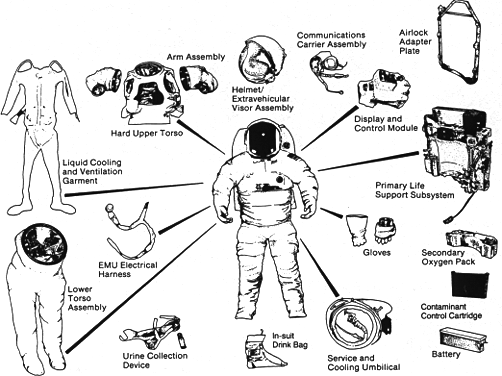
Also Read: How Long Can An Astronaut Survive In Their Spacesuit In Open Space?
USA: Exploration Extravehicular Mobility Unit (xEMU)
Since 1982, NASA has been using an extravehicular mobility unit (EMU) for extravehicular activity in outer space. The latest Artemis mission has spurred the development of a new generation suit, the xEMU. It is slated to be deployed in the mid-2020s.
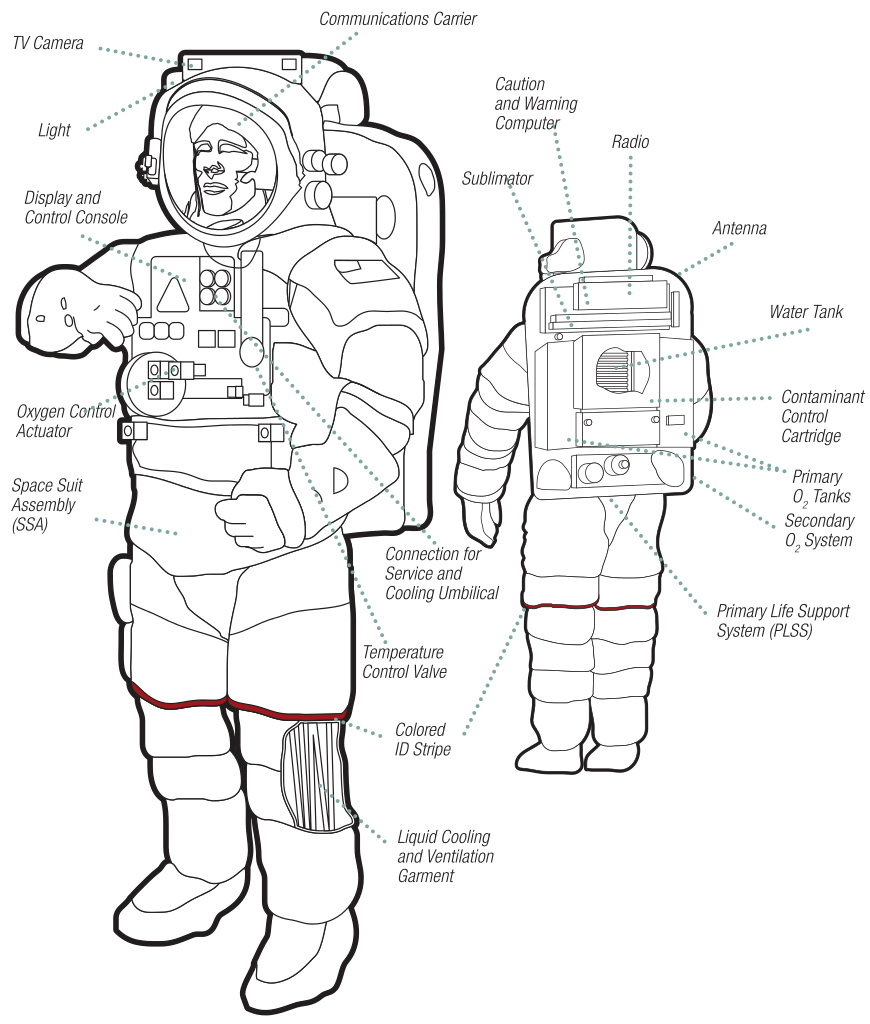
Components Of xEMU
1. Exploration Portable Life Support System (xPLSS)
The xPLSS is the system responsible for maintaining livable conditions inside the suit. It is a backpack that contains the necessary systems for survival. The system contains a primary O2 supply (Primary Oxygen Loop) and a backup O2 supply (Secondary Oxygen Loop). The gas is contained in cylinders (~20,700 kPa or 3,000 psi) attached on the xPLSS backpack.
The following functions are performed by the Primary Loop: Supply O2 gas to the helmet for breathing, supply O2 gas throughout the suit to maintain pressure against the body and maintain ventilation (removal exhaled CO2 from the helmet).
2. Breathing Oxygen Supply
The helmet is a bubble that exerts 20.7 kPa (~3 psi) evenly on the head. The O2 from the cylinder enters the the Hard Upper Torso (upper body component of the space suit) via a system of pipes that eventually lead to the rear portion of the helmet. The oxygen flows at a rate of 0.17 m3/min. As the oxygen flows to the front, it also displaces the exhaled CO2 in the helmet towards the collection pipes (CO2 washout).
3. Maintaining A Constant Pressure
The suit consists of a bladder layer that is inflated with O2 gas supplied from xPLSS. The bladder exerts a pressure of 20.7 kPa evenly against the torso.
4. Thermoregulation
This design aspect consists of two parts.
The first is a form-fitting (fit to body shape) Liquid Cooling Garment that receives cold water from the xPLSS and circulates it around the whole suit, maintaining a temperature near 20oC. After the water absorbs heat, it moves back to the Spacesuit Water Membrane Evaporator (SWME) in the xPLSS, which is the second part of this system.
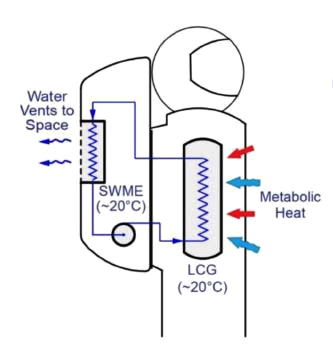
The SWME consists of micropores (~10-6 m). The outer part of the SWME is maintained at a low pressure. When the hot water comes into contact with the pores, it evaporates due to the low pressure on the other side and loses heat. The remaining water passes under the SWME and cools down, where it is then ready to be injected back into the suit.

5. Food And Water Supplies
The Hard Upper Torso (HUT) mentioned previously contains pouches for carrying a food bar and a water bag. The primary supply source is the mothership (the moon base) and astronauts would plan meals before embarking for extravehicular activity.
The first step towards a permanent presence on the moon is roughly scheduled to be taken in the mid-2020s, as the technologies are still at various developmental stages. However, considering NASA’s track-record and the collaborative nature of the program, it would be safe to say that a permanent presence on the moon is indeed possible. The ISS (International Space Station) was once thought impossible, but now it orbits above us as one of mankind’s greatest achievements. A lunar base just may be next!
How well do you understand the article above!

References (click to expand)
- (2020) Jeremy Paul Stroming - DSpace@MIT. dspace.mit.edu
- (2019) Testing of the NASA Exploration Extravehicular Mobility Unit .... The National Aeronautics and Space Administration
- Spacewalk Spacesuit Basics - NASA. The National Aeronautics and Space Administration
- A Next Generation Spacesuit for the Artemis ... - NASA. The National Aeronautics and Space Administration
- NASA's Lunar Exploration Program Overview. The National Aeronautics and Space Administration
- NASA's Coating Technology Could Help Resolve Lunar Dust .... The National Aeronautics and Space Administration
- K Davis. Testing of the NASA Exploration Extravehicular Mobility Unit .... CORE
- Exploration Portable Life Support System (xPLSS). The National Aeronautics and Space Administration
